This week Road Trips with Tom heads to South Dakota for a visit to Badlands National Park. There are lots of areas in the West characterized as badlands. These, however, are THE badlands – the baddest, best-known, most-visited, most spectacular badlands and the ones that belong on your road trip bucket list.
If you want to be unimpressed by this 244,000-acre park, come in mid-summer in the middle of the day. It will be hot and dry. It will be crowded. The lodge and campground will be full, and it will be hard to find a parking space at the visitor center or any of the overlooks. The surface of the park’s geologic formations will be drab and shadowless. You can forget about seeing any wildlife. And you’ll wonder why the heck you came all the way out here.
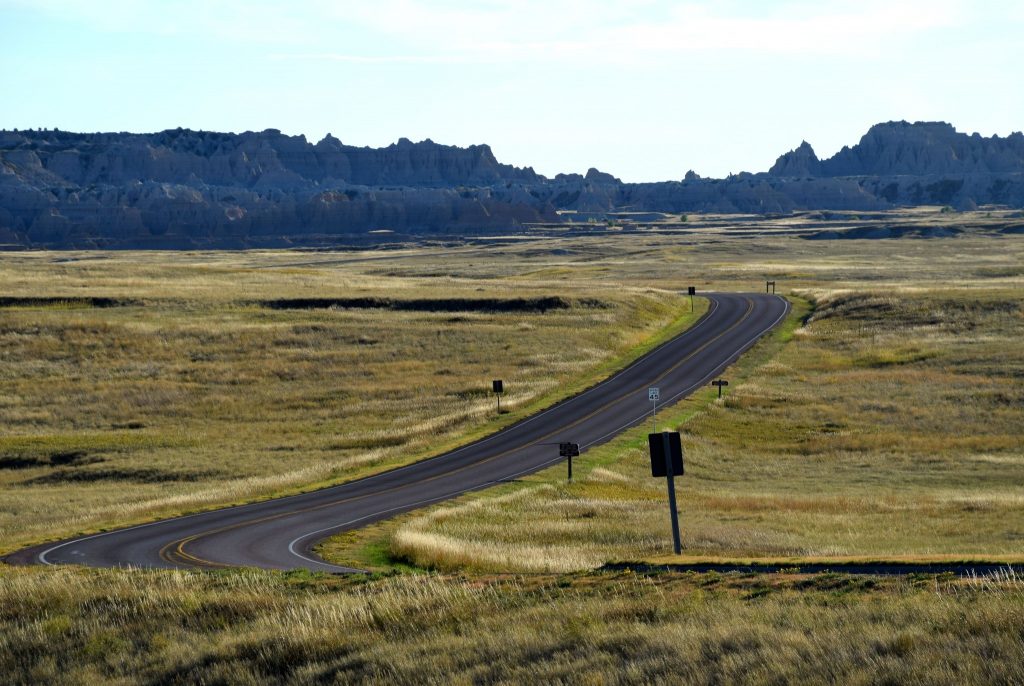
Ah . . . but come early or late in the day in spring or fall, and you’ll be blown away. The formations take definition from the interplay of light and shadow, as you can see from the accompanying photos. Colors are more intense. Most of the other visitors will have gone back to Minnesota or Wisconsin or wherever. You’ll have a good chance of seeing bighorn sheep, bison and pronghorn. Prairie dogs are a sure thing if you know where to go. Fall is my preference. There’s a better chance of clear days, and the sun is lower, meaning you’ll get better photos.
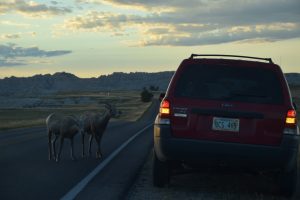
Brief drive-bys
Let’s start with a brief orientation. Badlands National Park is in western South Dakota, about an hour’s drive from the Black Hills. The park is huge, but 95 percent of the visitors come to the portion bisected by the Badlands Loop Road. The road is just off I-90, and it connects Exits 110 on the west and 131 on the east. Just under a million people visited the park last year, and I’d guess close to 75 percent of them came in July and August. I wasn’t joking about Minnesota and Wisconsin; I saw more license plates from those states than any others on my visit September 20. Talking to people I met suggested that most visitors do brief drive-bys en route to or from Yellowstone. In other words, this isn’t their primary destination.
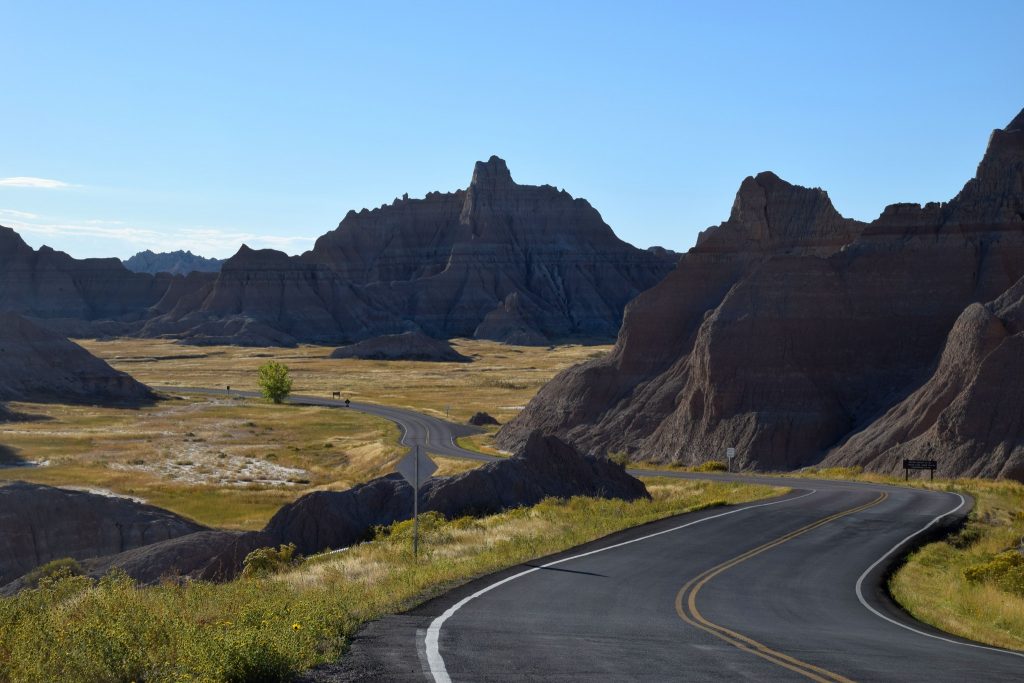
This was my third visit to Badlands and the second since I (and nearly all other photographers) switched over to digital. The prior visit was in November, and it snowed. Nice effect, but it was icy cold, and the relentless wind had sharp teeth. My photos were crummy. This time, I planned to drive from east to west during the last three hours of the day, then spend the night in the town of Wall, just outside the park. It was such an awesome drive that I ran out of light before finishing it.
Mammoth hunters
What you see here is the result of deposition and erosion that’s taken place over millions of years. Rivers and lakes deposited layers of silt during geologic times when the climate was much wetter. Gradually, it turned to stone, mostly shale. Then, water and wind sculpted the layers into the formations you see today. This process also created rich fossil deposits. In fact, Badlands National Park has the richest deposits of Oligocene fossils anywhere. (Don’t ask me what Oligocene means – I took this factoid out of the brochure I got at the entrance station.)
The rock is surprisingly soft. It’s so soft, in fact, that a single rainstorm can unearth fossils. It’s also dangerous to walk on, so stay on trails when hiking! The National Park Service says the formations are eroding at a rate of one inch per year. That means they’ll all be gone in another 500,000 years. So see them while you can!
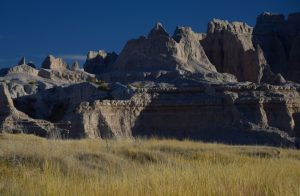
Native people lived and hunted here for over 11,000 years. The earliest were mammoth hunters. Much more recently, this was the land of the Lakota (Sioux), who still live nearby and jointly manage much of the national park.
Driving the loop road
So what’s there to do here? Most people drive the loop road, stopping at the various viewpoints along the way. Each overlook has one or more interpretive signs. There are eight hiking trails. The easiest and by far the most popular are the Door and Windows Trails. Both leave from the same parking lot near the east entrance. Badlands is also a great place for bicycling. In addition, it’s an excellent motorcycle route. Speaking of motorcycles, please keep in mind that a million bikers descend on Sturgis, S.D., every year in early August. Whether you want to join ’em or avoid ’em, time your visit accordingly. The 2017 dates are August 7-13. But again, I urge you to come in spring or fall to get the most out of your visit to Badlands National Park.
The Badlands Loop Road is fine for RVs. As for wildlife, they can be just about anywhere. Where the loop road turns north toward Wall, the unpaved Sage Creek Road continues west. It runs past a large prairie dog town; this is also your best chance at spotting bison.
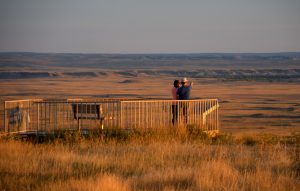
Ranger programs are offered in summer only. They include special night sky programs – this is one of the best places anywhere to see a bazillion stars.
Logistics
For information on hiking, wildlife, ranger programs and current travel conditions, go to www.nps.gov/badl. Badlands National Park is open 24/7. The main visitor center is close to the east entrance. That’s another reason for driving the loop from east to west. Hours are 8-7 in summer, 8-5 in spring and fall, and 8-4 in winter. There’s a small, summer-only visitor center in the remote White River region. The park entrance fee is $15 for cars and $10 for motorcycles.
What about accommodations? There’s a lodge next to the main visitor center. It’s open mid-May to mid-September. As at all national park lodges, rooms are way overpriced. You’ll also find a restaurant and store that are open mid-April to mid-October. For information on these concessions, go to www.foreverresorts.rzda.net/cedarpass. The small town of Wall is just a few miles from the park’s west entrance. It has a few motels, some mediocre restaurants, and the famous Wall Drug Store. Rapid City, which has full services, is only an hour’s drive west on I-90.
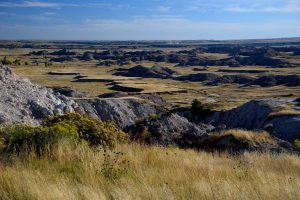
The park’s primary campground is part of the Cedar Pass complex. Rates are $22 per night, $37 with hookups. Sites can be reserved; go to the Forever Resorts web address above. The smaller Sage Creek Campground is along the road of the same name. It’s for tents only. There’s no fee, but it has outhouses and no water.
You’ll find picnic tables at the visitor center, Big Foot Pass overlook, and on the Conata Road just off the Badlands Loop. Restrooms are at the Door/Windows trailhead, the visitor center and the Fossil Exhibit turnout.
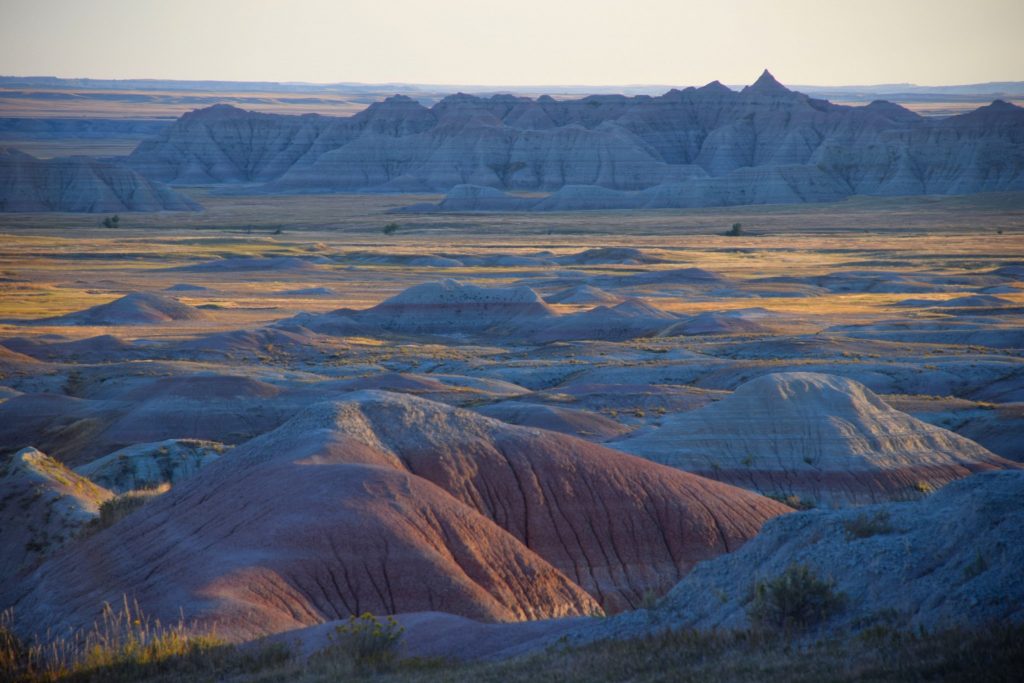
Thanks for visiting Road Trips with Tom. On October 9, we’ll head to California’s gold rush country and visit Columbia State Historic Park. Please join us!

